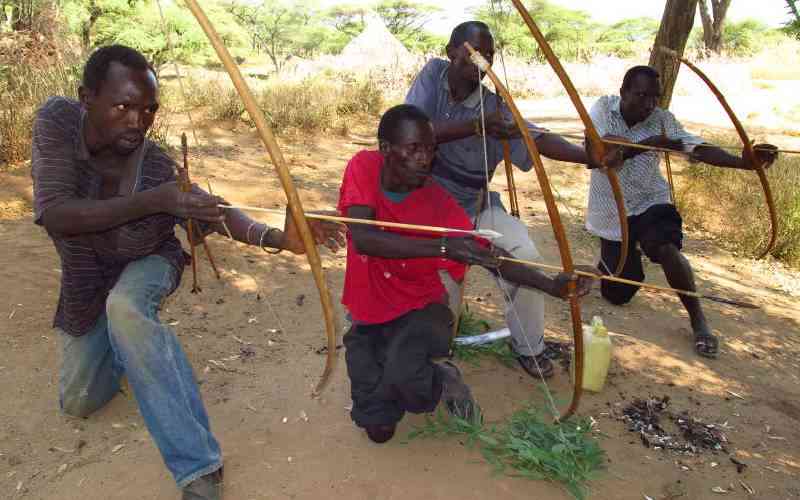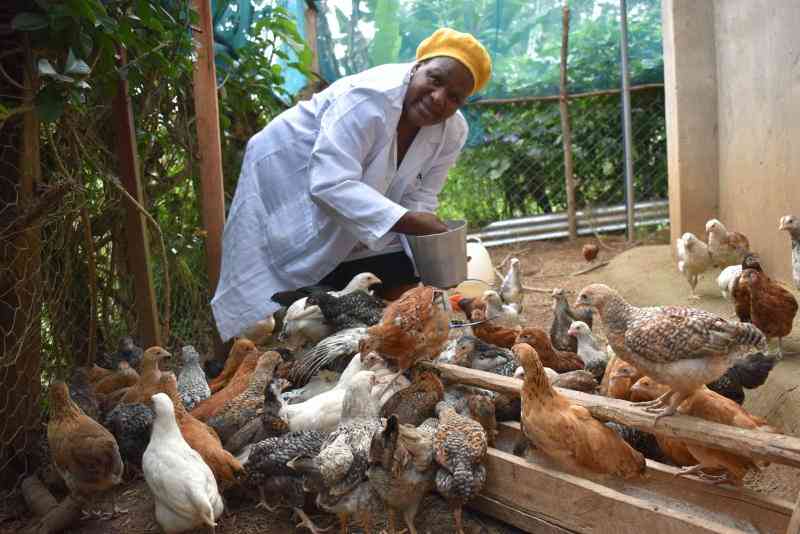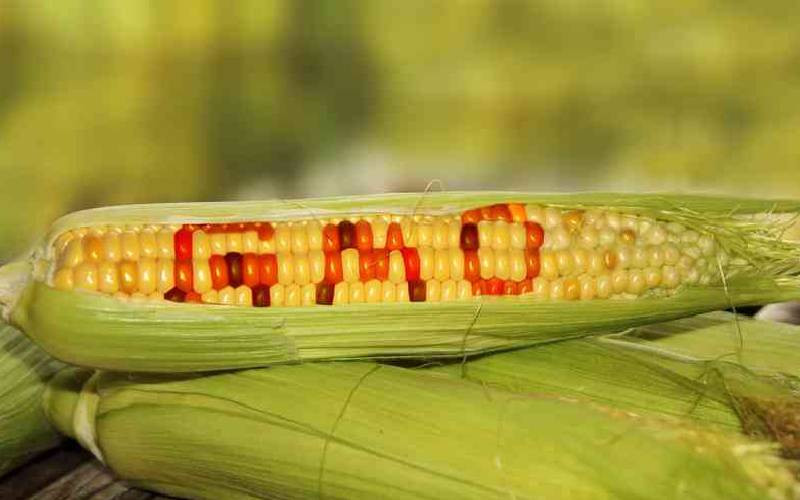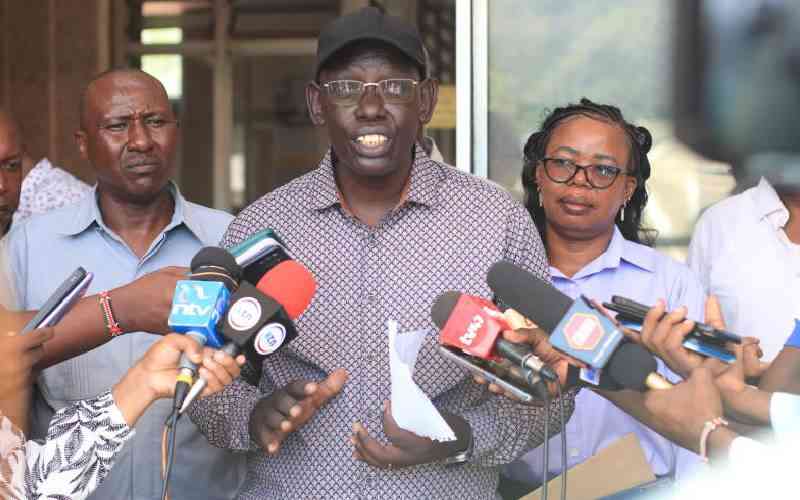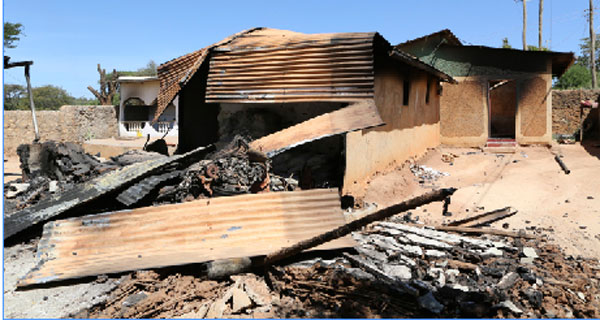 |
|
Freshly burnt houses. [PHOTOS: BONIFACE MWANGI/STANDARD] |
By PAUL WAFULA
Moyale, Kenya: The militia strike in broad daylight.
They are fearless, vengeful and athletic.
Their attacks are sporadic. Guns only go silent at prayer times, early morning, at one o’clock and at sunset.
They have lethal weapons including AK47s, Bren guns, both the general purpose and light machine guns, alongside G3 rifles - powerful guns that can destroy even helicopters in mid-air.
They also have commando mortars with capabilities to launch bombs from the range of 60 to 85 millimetres.
Their leaders have military like uniforms belted with a chain of bullets, making them a complete army of dangerous bush fighters.
They employ guerrilla tactics to shake off police and their pursuers.
The gangs shoot carelessly and indiscriminately at anyone not on their side, have no respect for humanitarian organisations including the Red Cross, and are religiously loyal to their cause.
They are assembled from largely semi-literate youth. They are selective on which health facilities and which medical officers can attend to their injured.
Those who succumb to their injuries are buried almost immediately, partly because of their religious affiliation but also as a strategy not to expose their weakness.
Graveyards
One of the major graveyards is at Arosa village, less than 15 kilometres from Moyale town.
“In the previous battles we were allowed access to the bodies. But this one has been different. We have not been allowed to handle any bodies and we may never know exactly how many people were killed,” Moyale branch Red Cross Coordinator Stephen Bonaya said.
The few bodies that may find their way to area mortuaries or hospitals are whisked away in a hurry and disposed.
Stay informed. Subscribe to our newsletter
Too many bodies on one side would reveal how vanquished the side is. On one side of the conflict are the Borana, who after losing most of the seats in the previous General Election feel left out in the distribution of resources and jobs.
This is despite being the single largest community while the opposing side is a combined force of the Gabra and Burji, who after winning the polls feel it was time to correct historical injustices.
Politics, land disputes and ethnic rivalry are at the heart of the conflict.
When they strike, even the local police take cover. At times, they battle their perceived enemies as close as 50 metres from the rapid deployment camp at the border town.
A single attack on a village is done by between 100 to 200 heavily armed fighters.
The militia enjoys support from both the political and professional class, depending on the side they fight for. Before an attack, some of their men are positioned at the roadside to push back any reinforcement as their colleagues lay ambush.
They hide in caves, trees and big holes, which are converted into graves when one of their own is killed. Most of the instructions are issued in broken Swahili and repeated in local dialect, a signal that they are a mix of locals and foreigners.
This is the profile of the guerrilla militia, which has uprooted thousands of families, torched an unknown number of houses and successfully held Moyale town hostage for 12 days, as police helplessly watched.
“They have strong weapons like the AK47s, Brens, general purpose machine guns (Gmpgs), G3s, light machine guns (Lmgs) and they have commando mortars too. They are well equipped. This is what we have witnessed on the battle field,” an officer who was on the front line to neutralise the militia told the investigation desk.
Most of the weapons are understood to be shipped into the county through the porous Ethiopian and Somali borders. What puzzled police most is the fact that the militia seemed never to run out of supply of bullets.
But in the 12 days of heavy combat, the price of a bullet rose fivefold from Sh100 to Sh500, pushed by growing demand.
In the last 36 hours of the siege, the militia killed at least 27 people.
“They had military uniform but we are trying to establish the source of this uniform,” the highly placed officer who is not authorised to speak to the media said.
The Standard was in Moyale for the five days when the fight was most brutal and witnessed firsthand the inside story of the Moyale siege after the militia cut off the border town from the rest of the country.
Largest tribes
The fight is between the two main camps formed by the largest tribes, the Gabra and the Borana.
The Gabra are fighting under an outfit known as Gabu, having combined with the Burji. Gabu is the short form of Gabra and Burji, while the Borana are on their own.
It is a fight of friends turned foe. Previously, the Borana would combine with the Gabra to fight the Burji. Gabu came about with the dropping of the Rendile, who are not in Moyale, from an earlier outfit known as the Regabu that was used to win political power in the last General Election.
Regabu was a group formed by the Rendile, Gabra and Burji, named from their first two syllables.
Regabu was formed to win political power against the most populous Borana community.
But after winning most of the seats in the last polls, the political class has been unable to break them.
Moyale is one of the biggest towns in Marsabit County, and is home to about 15 communities.
Others are the Rendile and the Gare. At least five communities have their own militia to protect them from ‘external aggression’ in what is making reconciliation initiatives fail to take off.
The town, which borders Ethiopia, hosts about 40,000 people but most of them fled before the violence hit peak, turning it into a ghost town.
Nothing was coming in or leaving. At some point, both the police and the hospital ran out of water. The surviving residents relied largely on food from Ethiopia.
“The violence was planned. Most locals knew it would happen and they whisked away their livestock to safety. Some are in Ethiopia, others are in the lower parts of Helu, Bute and the rest have gone as far as Marsabit town, Isiolo and Nairobi,” Mr Bonaya said.
“The violence has been boiling since mid-July and now it is at its climax,” Mr Bonaya said.
Investigation into the Moyale bloodbath established that militia from the Migo clan of the Gabra community led a combined army of the larger Gabra community and the Burji to overpower the Borana militia in what saw the torching of at least five Borana inhabited villages.
Gabu bush fighters uprooted hundreds of Boranas from their homes. Some of the villages torched include Helu, Manyatta Burji, Butiye, and Watiti. The torching in these villages sapred houses of the Gabra, Burji and those seen as ‘foreigners’.
Foreigners are referred to as watu wa nywele ngumu, a Swahili phrase which loosely translates to people with hard hair.
Before the Kenya Defence Forces (KDF) intervened with air strikes, the militia had started asking for up to Sh100,000 from hotel and restaurant owners to protect their premises.
Some of the torched houses include that of the local chief, who is from the Borana community and that of the Butiye County Representative Mr Golicha Galgalo.
Trouble in Marsabit County began when a group of Ethiopians came and settled at a fertile place called Funanyata, an area where the Borana lay claim, under instructions from one of the leading politicians in the county.
The tension played out publicly during an investors’ forum in the county.
“More than 100 families came from Ethiopia and settled at Funanyata and this was what lit the latest conflict that has seen Moyale burn,” Mr Ibrahim Woche, an official of the Minority Rights and Development Forum.
On their part, the Borana militia is understood to enjoy support from the Oromo Liberation Movement (OLF), a guerrilla militia group that has been accused of plotting to overthrow the Ethiopian Government.
“Officials from the Ethiopian Government blame the Borana for being sympathetic to the Oromo Liberation Movement (OLF),” Mr Woche said.
Locals say the militias are emboldenedby the slow response of police.
This has seen them start hitting closer to Moyale town. Before then, the attacks happened at Sololo town, but this had left travellers another route through Wajir to get to Nairobi.
As they advanced, the militia shot an electricity transformer and disconnected power to the besieged town in their last attempt to disrupt a major military operation underway at the border.
Moyale relies on electricity from Ethiopia and has a generator to supplement it. Pumping water also stopped in what has seen the main public hospital run without water for at least two days.
The attack raised fears that a power blackout would cripple police communication and expose the town to a major attack hours before the military started an airstrike on Sunday morning to flush out the militia from their hideouts.
A suspect, Mr Rashid Mohammed, who denied being a militia, was identified by locals as having gone to Butiye Primary School.
Red Cross handled 27 casualties in the last three days of the conflict. More than 57 nurses have also fled the district hospital.
An impeccable source involved in the rescue operation told The Standard that in the latest attack, the Borana militia lost.
But what is likely to make it harder for Kenyans to know the exact numbers of those who have been killed in the battle is they are buried shortly after their deaths. This, locals say, is to ensure that each side does not show they have weakened.
“Gabras who have superior weapons had overpowered the Boranas by the time we arrived on the site. Both groups have been downplaying the number of people from their side killed because they do not want to appear weak,” the source said.
Moyale locals say the animosity between the communities has persisted since the last elections.
“In the March poll, the smaller communities, the Rendile, Burji and Gabra, united under an outfit dubbed Regabu to vote as a block against the Borana, who had been accused of dominating the local politics for decades. This happened as planned but the groupings are yet to be broken more than eight months after the election,” an area MP told The Standard in an interview.
The conflict has seen more than 800 households displaced, several houses torched over the past six months. More than 10 vehicles have also been burnt.
“We have plans to take opinion leaders and village elders of the warring communities to a neutral place like Isiolo to allow them to talk to one another and call a truce,” Mr John Kipsiwa, the Assistant County Commissioner said in an interview.
[email protected]
 The Standard Group Plc is a
multi-media organization with investments in media platforms spanning newspaper
print operations, television, radio broadcasting, digital and online services. The
Standard Group is recognized as a leading multi-media house in Kenya with a key
influence in matters of national and international interest.
The Standard Group Plc is a
multi-media organization with investments in media platforms spanning newspaper
print operations, television, radio broadcasting, digital and online services. The
Standard Group is recognized as a leading multi-media house in Kenya with a key
influence in matters of national and international interest.
 The Standard Group Plc is a
multi-media organization with investments in media platforms spanning newspaper
print operations, television, radio broadcasting, digital and online services. The
Standard Group is recognized as a leading multi-media house in Kenya with a key
influence in matters of national and international interest.
The Standard Group Plc is a
multi-media organization with investments in media platforms spanning newspaper
print operations, television, radio broadcasting, digital and online services. The
Standard Group is recognized as a leading multi-media house in Kenya with a key
influence in matters of national and international interest.


